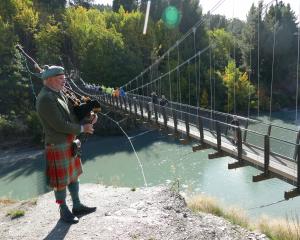Six juvenile skinks were recently recovered from the Lindis area by a team of Doc rangers.
Doc captive breeding specialist Lesley Judd said the skinks would enable a breeding programme for the endangered grand and Otago skink populations to broaden their gene base.
"Grand skinks are on an extinction knife-edge.
In the Lindis area they are particularly vulnerable because of the small number living there."
The Doc breeding recovery programme aimed to remove a small number of juveniles over several years to establish a captive breeding programme. Juvenile offspring from the captive lizards would be repatriated back into the wild, Ms Judd said.
The juvenile grand skinks are being held in a Doc quarantine facility for three months before being transferred to a purpose-built captive facility at Peacock Springs Wildlife Park near Christchurch.
It was hoped managed breeding would result in offspring in three to four years' time, Ms Judd said.
While the Doc team was in the Lindis, it also captured three juvenile Otago skinks to supplement an already established captive breeding programme.
Grand skinks are one of New New Zealand's largest lizards, reaching up to 30cm in length and living more than 18 years.
The lizards were once spread across most of Otago but now were largely restricted to a small area of eastern Otago, near Macraes Flat, Ms Judd said.
Some small, genetically distinct populations of grand skinks also remained in the Lindis area and in an attempt to safeguard the genes of the Lindis populations Doc was setting up a controlled captive population, she said.












